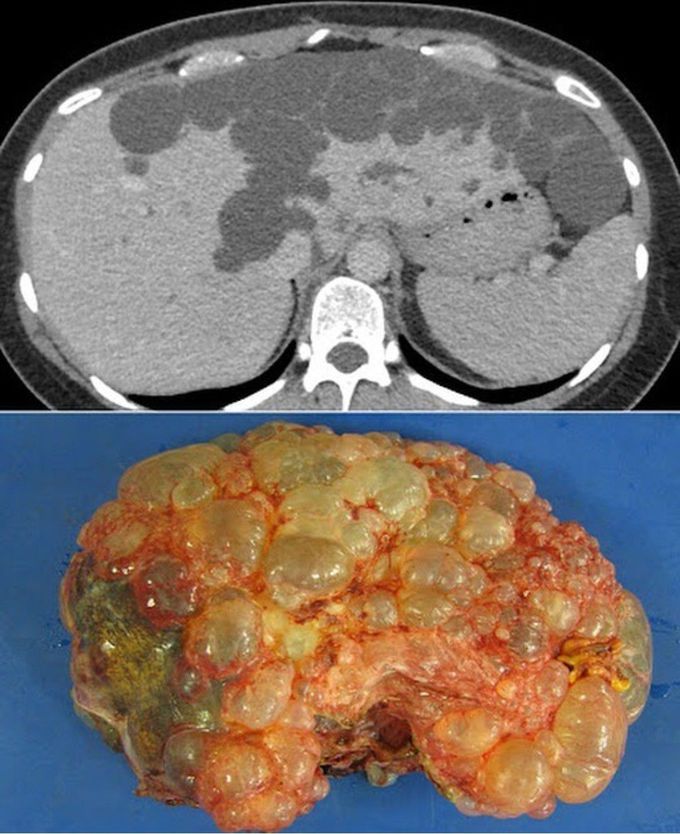


Polycystic liver disease
Polycystic liver disease is a rare condition that causes cysts to grow throughout the liver. This patient presented with upper abdominal pain. An abdominal ultrasound was arranged and showed a large number of cysts in the liver. Subsequent CT scan demonstrates multiple cysts of varying sizes, predominantly involving the left lobe of the liver. This patient also had multiple cysts in both kidneys. These are the appearances of polycystic liver disease. As the patient was very symptomatic, a left hemihepatectomy was performed. The resected left lobe is shown here, and correlates nicely with the CT image above it. Polycystic liver disease is a hereditary, autosomal dominant condition that is more common in women and, in around half of patients, is associated with polycystic kidney disease, as in this patient. The majority of patients are asymptomatic however in some patients the cysts cause abdominal pain, distension, or early satiety (due to mass effect on the adjacent stomach). Rarely, the condition can cause hepatic failure and portal hypertension. Patients may also present with acute abdominal pain due to hemorrhage into a cyst, or rupture of a superficial cyst into the peritoneal cavity.

